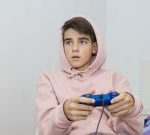(HealthDay News) — Training too hard or too fast is the culprit behind many exercise-related injuries, says BetterHealth. Before working out, consult with a doctor, gym instructor or coach on how to exercise safely. BetterHealth mentions these warning signs that you should immediately stop exercising: Discomfort or pain. Chest pain or other pain that could indicate a heart attack. Significant breathlessness. A very rapid or irregular heartbeat.
A little about: Weekly Gravy
All Sauce from Weekly Gravy:
Vaping Is the Darling of Instagram

Vaping has been deemed hazardous for your health by public officials across America, but you wouldn’t know it by scrolling through Instagram. Instead, researchers discovered that Instagram posts that promote use of the devices outnumber anti-vaping content by a shocking ratio of 10,000 to 1. Nearly one-third of U.S. teens use e-cigarettes. In 2018, the U.S. Food and Drug Administration launched a campaign to discourage vaping among youth, according to authors of the study published Jan. 22 in the journal Frontiers in Communication. “U.S. public health officials have been calling vaping among youth an epidemic and have been putting a lot of effort into trying to stop this epidemic by introducing #TheRealCost anti-vaping campaign,” said researcher Julia Vassey, from the University of California, Berkeley. “But this stark imbalance in the volume of posts has caused the FDA message to be overwhelmed by marketing from the vaping brands,” she said in a journal news release. Vassey and her colleagues analyzed nearly 246,000 Instagram posts from before and after the #TheRealCost campaign launch, and interviewed five vaping influencers and eight college-age social media users. “We focused on Instagram because the vaping influencers we interviewed for this study identified Instagram as their most important social media marketing platform,” Vassey said. “Based on the results, the FDA anti-vaping campaign is not very popular and we saw Instagram user comments… read on >
Super-Cooled Injections Might Ice Away ‘Deep Fat’

The Harvard-associated lab that created the “CoolSculpting” process of reducing fat says it’s on the trail of the next advance in nonsurgical slimming. CoolSculpting freezes fat cells by applying an ice-cold gel pad to the skin, causing cells to die off and either be flushed away or absorbed by the body, said lead researcher Dr. Lilit Garibyan, an investigator at the Wellman Center for Photomedicine at Massachusetts General Hospital in Boston. Now her lab is trying to make that process even more effective by injecting an icy liquid slurry directly into fat deposits. In tests with pigs, the injectable slurry containing 20% to 40% ice caused fat deposits to melt away over several weeks, researchers reported recently in the journal Plastic and Reconstructive Surgery. The procedure is headed to human clinical trials next, and researchers hope to have it approved and on the market in a few years, Garibyan said. The U.S. Food and Drug Administration approved CoolSculpting in 2008. Garibyan said it remains the only noninvasive technology the FDA has cleared to reduce and reshape fat deposits in the body. The process works using a principle that you observe every time you open your refrigerator — fats freeze at a lower temperature than water, she said. Butter turns to liquid at warmer temperatures, but solidifies in the fridge, Garibyan said. Water remains liquid at… read on >
Health Tip: Nuts and Heart Health
(HealthDay News) — Regular nut consumption can lower the risk of heart disease by up to 14 percent, says the American College of Cardiology. Nuts contain heart-healthy fats, protein, vitamins and minerals. The group reminds people that a complete heart-healthy diet should include fruits, vegetables, beans, whole grains, low-fat dairy, fish and nuts. But as one ounce of nuts can contain as many as 200 calories, be mindful of your portion size, the group says.
Health Tip: Hand Exercises to Improve Strength
(HealthDay News) — From texting to cooking, we use our hands often. There are many exercises that can strengthen your hands and fingers, increase your range of motion and provide relief, says Keck Medicine. It mentions five exercises to improve flexibility, dexterity and strength: Squeeze a soft ball in your palm as hard as you can for a few seconds. Repeat ten times. Make a gentle fist and wrap your thumb across your fingers. Hold for one minute, release and repeat. Warm up before exercise. Use a heating pad or soak hands in warm water for five-to-10 minutes. Place your hand flat on a table. Gently lift each finger at a time off the table. Hold for a few seconds and lower the finger. Stretch your wrists for 15-to-30 seconds. Repeat two-to-four times.
Canadian Study Probes Links Between Food Access and Early Death

“Food insecurity” — not having enough money to afford sufficient food — increases the risk of premature death, new research suggests. For the study, researchers analyzed data from more than 510,000 adults in Canada between 2005 and 2017. Over the study period, nearly 25,500 people died prematurely. The average life expectancy in Canada between 2008 and 2014 was 82, so deaths at or before that age were considered premature. The study found that, compared with adults who had access to enough food, those with food insecurity were 10% to 37% more likely to die early from any cause other than cancer. Rates of premature death from infectious-parasitic diseases, unintentional injuries and suicides were more than twice as high among those with severe food insecurity compared with others, according to the report. Fei Men, a postdoctoral fellow at the University of Toronto, led the study, which was published Jan. 20 in the CMAJ (Canadian Medical Association Journal). Among the adults who died prematurely, those with severe food insecurity died an average of nine years younger than those who were food secure (59.5 years old versus 68.9 years old), the findings showed. “The significant correlations of all levels of food insecurity with potentially avoidable deaths imply that food-insecure adults benefit less from public health efforts to prevent and treat diseases and injuries than their food-secure counterparts,” the… read on >
What Parents Overlook When Their Teen Is a Heavy Gamer

Most American parents believe their teens spend too much time playing video games, but many underestimate the actual amount, a new survey shows. The poll of nearly 1,000 parents with at least one child aged 13 to 18 found that 86% said their teen spends too much time gaming. Among parents of daily gamers, 54% report their teen plays three or more hours a day, compared with 13% of teens who don’t play every day. Yet, only 13% of parents of daily gamers believe their teen spends more time gaming than other teens, and 78% believe their teen’s gaming is less than or about the same as their peers, according to the C.S. Mott Children’s Hospital National Poll on Children’s Health, from the University of Michigan. “Many parents of frequent gamers have a misconception that the amount of time their teenager spends playing video games is in line with their peers,” poll co-director and Mott pediatrician Dr. Gary Freed said in a university news release. Twice as many parents said their teen boy plays video games every day compared to parents of teen girls. Teen boys are also more likely to spend three or more hours gaming. Parents said gaming often gets in the way of other aspects of their teen’s life, such as family activities and interactions (46%), sleep (44%), homework (34%), friendships with… read on >
Facebook Falls Short for College Kids Battling Depression, Study Finds

Turning to Facebook for help is probably the wrong move for depressed college students, new research shows. In a small study of 33 students who posted on Facebook about feelings of depression, not one was advised to reach out to a mental health professional for help. Rather, friends sent supportive and encouraging messages. “It makes me concerned that none of the Facebook friends of students in this study were proactive in helping their friend get help,” said lead author Scottye Cash, an associate professor of social work at Ohio State University, in Columbus. “We need to figure out why.” Study participants reported the posts they made and how their friends reacted. They also completed a questionnaire on depression. Nearly half had symptoms of moderate or severe depression and 33% said they had had recent suicidal thoughts. “There’s no doubt that many of the students in our study needed mental health help,” Cash said. Student posts included feelings of loneliness or having a bad day or feeling things couldn’t get worse. Only one student asked for help and only three mentioned “depression” or related words, Cash said. Most indicated their depression through song lyrics, emoji or quotes that expressed sadness. “They didn’t use words like ‘depressed’ in their Facebook posts,” Cash said. “It may be because of the stigma around mental illness. Or maybe they didn’t… read on >
How to Keep Those Blood Vessels Pumping

Want to know how to avoid blood clots and varicose veins? One physician offers some tips on how to keep your blood vessels healthy. Arteries and veins are collectively known as the vascular system. Arteries transport oxygen and nutrient-rich blood throughout the body, while veins carry de-oxygenated, waste-filled blood back to the heart to be renewed, explained Dr. Chelsea Dorsey, a vascular surgeon from University of Chicago Medicine. Problems can occur in both arteries and veins. It’s estimated that 12%-20% of people older than 60 have peripheral arterial disease (PAD), and more than 40% of women have venous insufficiency, the underlying condition that leads to varicose and spider veins. Blood clots in veins can occur at any age, and people at risk include those who are sick, injured or unable to walk for a period of time, and women who take birth control pills. Varicose veins are more common among younger people, and women are twice as likely as men to be affected, Dorsey noted. Problems in arteries — such as atherosclerosis (narrowing or hardening of the arteries) — tend to increase with age. The health of your arteries and veins is influenced by both genetics and lifestyle. For example, the most common risk factors for varicose veins and venous insufficiency include a family history of these conditions, spending long periods of time on your… read on >
Health Tip: Preventing Eye Injuries
(HealthDay News) — One of the simplest ways to maintain healthy vision is to protect your eyes from injury, says the American Academy of Ophthalmology. About 90 percent of eye injuries involve lack of protective eyewear. Whether you’re maintaining equipment or playing sports, wearing appropriate protective eyewear is very important, the doctor’s group says.









